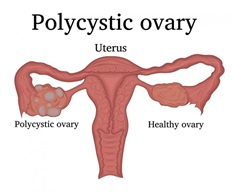
Major advances in healthcare have led to the creation of non-invasive imaging techniques such as the MRI & CT Scan to give high resolution images of what is going on inside the body. Before now, doctors had to rely on x-rays, but these two types of medical imaging give a clearer visual representation of organs and other internal structures making it easier for physicians to diagnose ailments.
The confusion has always been which should be prescribed and why.
MAGNETIC RESONANCE IMAGING (MRI)

The MRI uses powerful magnetic fields and radio frequencies to generate detailed images of internal organs, tissues and bones. It is usually used to produce detailed sectional images of the body in any imaging plane. It is used to identify brain tumours spinal cord injuries, tendon injuries etc.
With the images produced by this scan, your doctor can view the body parts being scanned in slices, like it was sliced layer by layer and a picture of each slice was taken, this leads to a more accurate diagnosis of ailments.
COMPUTED TOMOGRAPHY SCAN (CT scan)

The CT scan is a fast and painless procedure that uses sophisticated X-ray to detect disease conditions. The images generated by this machine can be viewed on a computer or printed for review.
The CT scan can be used to diagnose bone disorders, cardiovascular diseases, internal injury and also detect cancer.
MRI VS CT SCAN.
These two imaging techniques are very similar in that they produce very high definition images unlike the traditional X-rays although the main differences are the methods by which the images are obtained – MRI uses magnetic fields while the CT uses radio frequencies. Although the MRI produces a more detailed soft tissue resolution images than the CT, the CT is very fast and can be used in cases of emergencies. It can be done in less than five minutes unlike the MRI that could take up to two hours.
They are both relatively safe; at Nisa Hospital, we take our time to go through patient’s history and ailments before advising on which of them to be done.
September is PCOS awareness month and this is a perfect time to create awareness on this condition that affects one in every ten women.
PCOS is a very common condition which affects women of childbearing age; it can also contribute to disease conditions like Type 2 diabetes.
This condition is called a syndrome because it is characterised by a group of symptoms.
What causes PCOS?
The cause is not exactly known but it has been said to be hereditary, it could also be due to insulin resistance (this means the cells in the body are not using insulin properly)
SYMPTOMS OF PCOS
If you have two or more of these symptoms, then you may have PCOS. You however have to rule out the fact that these symptoms are not caused by another condition.

Infertility Irregular periods – these could be absent, infrequent, or unpredictable periods,
Excess male hormone (Androgen)
Poor Egg quality
Obesity, severe acne, and oily skin
Hirsutism – excess hair growth on the face, chest, back and abdomen – places where they shouldn’t be in the first place
Multiple small fluid-filled sacs in the ovaries (can be found through an ultrasound)
CAN PCOS BE TREATED?
Yes, it can be treated. PCOS treatment mainly helps induce ovulation, improve insulin levels or treat symptoms like hair growth or acne.
PCOS AND INFERTILITY
PCOS is a common cause of infertility. Infact, some women only find out they have it due to their inability to conceive.
This is how it works – women who do not ovulate cannot conceive and not ovulating means she is not releasing enough eggs to be fertilised, this thus makes it harder for her to get pregnant.
HOW IS PCOS TREATED IN WOMEN NOT TRYING TO GET PREGNANT?
If your goal is not to get pregnant, hormone medications are usually prescribed to correct your PCOS symptoms. Oral contraceptive pills are often taken to reduce unwanted hair growth and acne, they also make menstrual periods more regular and prevent pregnancy. Weight loss is also recommended because it lowers the risk of diabetes and androgen levels in women with PCOS.
It is usually advisable to talk with a specialised doctor to find the best approach for you. At Nisa Premier Hospital, treatments are tailored to each woman’s needs and symptoms.
PCOS AND OBESITY
Weight gain is one of the risk factors of polycystic ovarian syndrome. If a woman living with PCOS is overweight, losing weight can help improve her ovulation patterns and fertility. Insulin-sensitising medications can help the body use insulin more effectively to improve ovulation in some patients with PCOS. This may also lower the risk of developing diabetes or metabolic syndrome.
There is no definitive test for the diagnosis for Polycystic Ovarian Syndrome, your doctor might recommend a pelvic examination, some blood tests and an ultrasound scan. Your doctor will recommend treatments based on your individual concerns.



